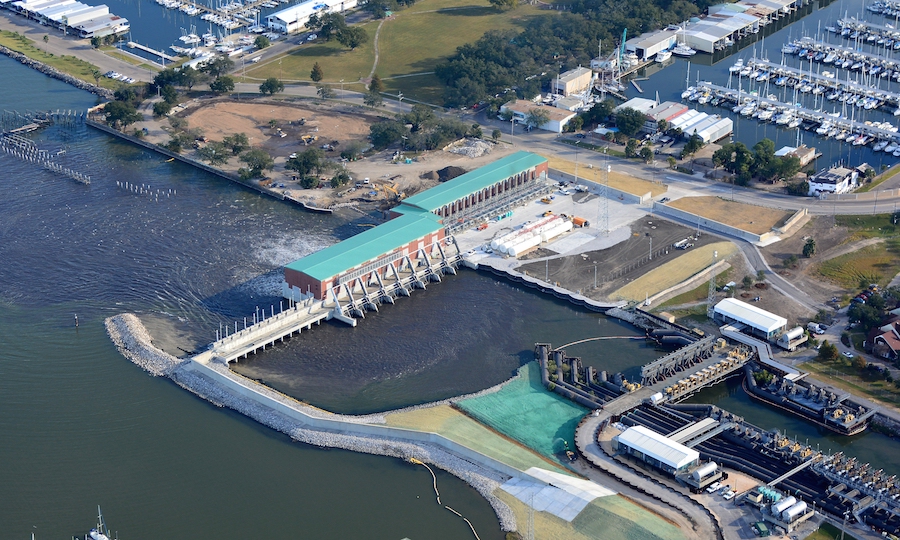In a few weeks, workers will begin to dismantle the temporary pumps and floodgates that have been in place along the New Orleans lakefront since the year after Hurricane Katrina.
The U.S. Army Corps of Engineers in October awarded a $17 million contract to M.R. Pittman Group LLC of St. Rose, La., to remove the structures, and work is scheduled to get under way in December and be complete by summer 2020.
The removal of the old structures is the final step in more than a decade’s worth of flood protection work at the three canals.
This past May, new permanent pumps began operating at the 17th Street, London Avenue and Orleans Avenue canals along Lake Pontchartrain. The Corps put in the old pumps and gates in 2006 as a temporary measure to protect the city from storm surge.
“This is all about taking them out and returning the site to preconstruction conditions,” says Bradley Drouant, senior project manager for the Corps.
The project entails removing the structures, along with any above-ground equipment, machinery, buildings and platforms used to operate those structures. That will require some extensive diving and underwater work so the piles and supports for the structures can be cut from the bottom of the canals, Drouant says.
Because the canals provide drainage for the city, they need to remain unobstructed, which means work cannot inhibit the flow of the canals at any point. Drouant says contractors might need to use a crane to drop in floating platforms so they can get work done.
A key consideration of the project will be how to minimize construction impacts to neighboring homes and businesses. All three pumping stations are surrounded by residential neighborhoods; the 17th Street Canal also borders a restaurant, and the London Avenue Canal is next to the University of New Orleans. “We wanted them to get out of there as quickly as they could without having to work weekends so the neighborhoods could have a little break,” Drouant says.
To complete the project within the given time frame, work may need to take place at all three sites simultaneously. “That’s going to be a challenge for the contractor setting up sequencing and scheduling,” Drouant says.
Rounding out the project will be aesthetic improvements such as newly planted trees to replace the ones that were removed when the temporary stations went in. “We’re trying to return it back to a nice, residential neighborhood,” Drouant said.
The floodwalls along all three canals breached during Hurricane Katrina, resulting in widespread flooding throughout the city.
The temporary pump and gate structures were designed to defend the city from flooding associated with a 100-year storm, which has a 1% chance of occurring in any given year, until the permanent system was complete. The temporary system withstood hurricanes Gustav, Ike, Isaac and Nate.
Construction of the new permanent pump system began in 2013. PCCP Constructors, a joint venture consisting of Kiewit Louisiana Co., Traylor Bros. Inc., and M.R. Pittman Group, was the contractor on the $725 million project. This past May, the Corps turned over authority of the new system to the Southeast Louisiana Flood Protection Authority East.




Post a comment to this article
Report Abusive Comment